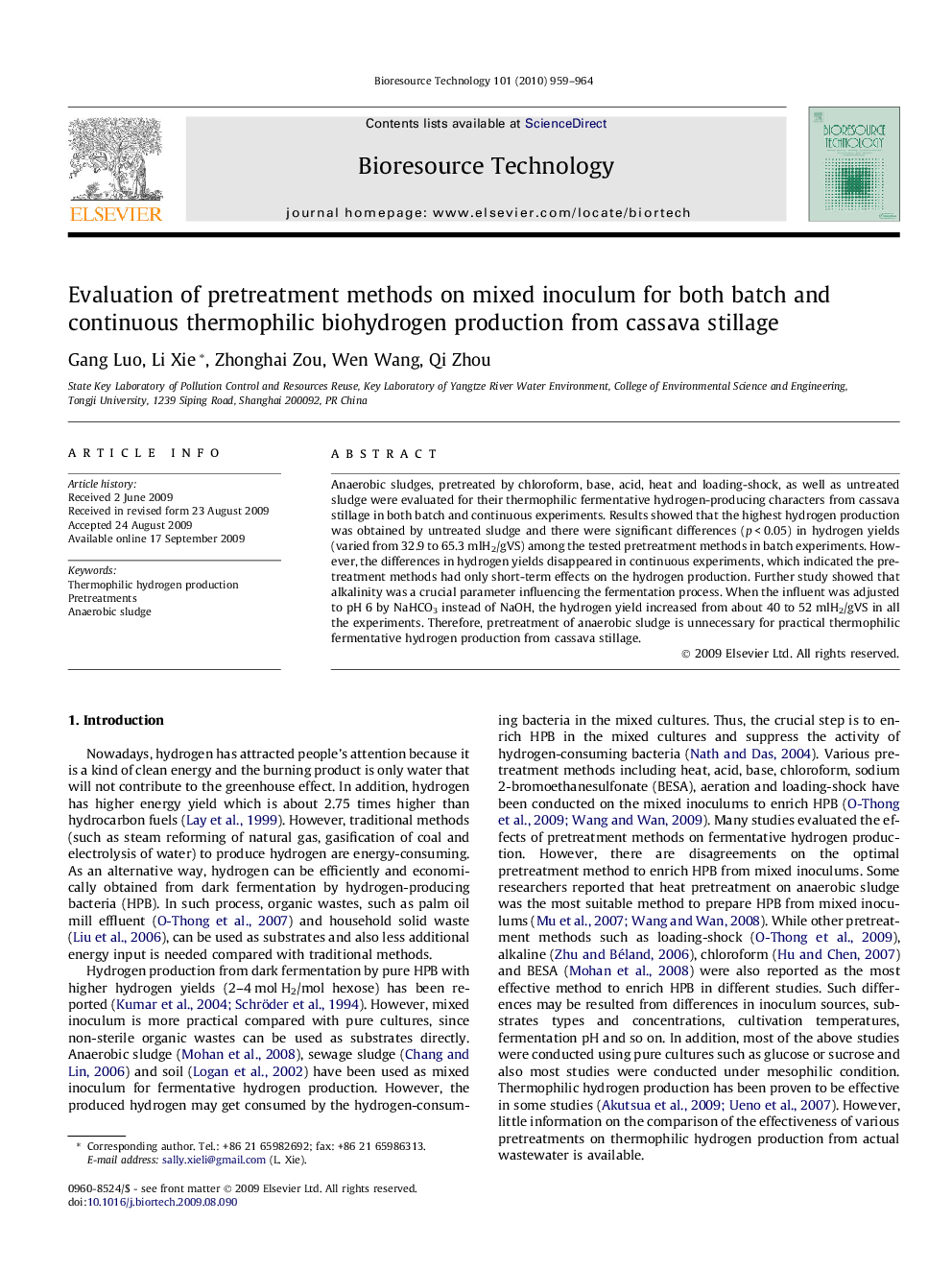| کد مقاله | کد نشریه | سال انتشار | مقاله انگلیسی | نسخه تمام متن |
|---|---|---|---|---|
| 684063 | 889014 | 2010 | 6 صفحه PDF | دانلود رایگان |

Anaerobic sludges, pretreated by chloroform, base, acid, heat and loading-shock, as well as untreated sludge were evaluated for their thermophilic fermentative hydrogen-producing characters from cassava stillage in both batch and continuous experiments. Results showed that the highest hydrogen production was obtained by untreated sludge and there were significant differences (p < 0.05) in hydrogen yields (varied from 32.9 to 65.3 mlH2/gVS) among the tested pretreatment methods in batch experiments. However, the differences in hydrogen yields disappeared in continuous experiments, which indicated the pretreatment methods had only short-term effects on the hydrogen production. Further study showed that alkalinity was a crucial parameter influencing the fermentation process. When the influent was adjusted to pH 6 by NaHCO3 instead of NaOH, the hydrogen yield increased from about 40 to 52 mlH2/gVS in all the experiments. Therefore, pretreatment of anaerobic sludge is unnecessary for practical thermophilic fermentative hydrogen production from cassava stillage.
Journal: Bioresource Technology - Volume 101, Issue 3, February 2010, Pages 959–964